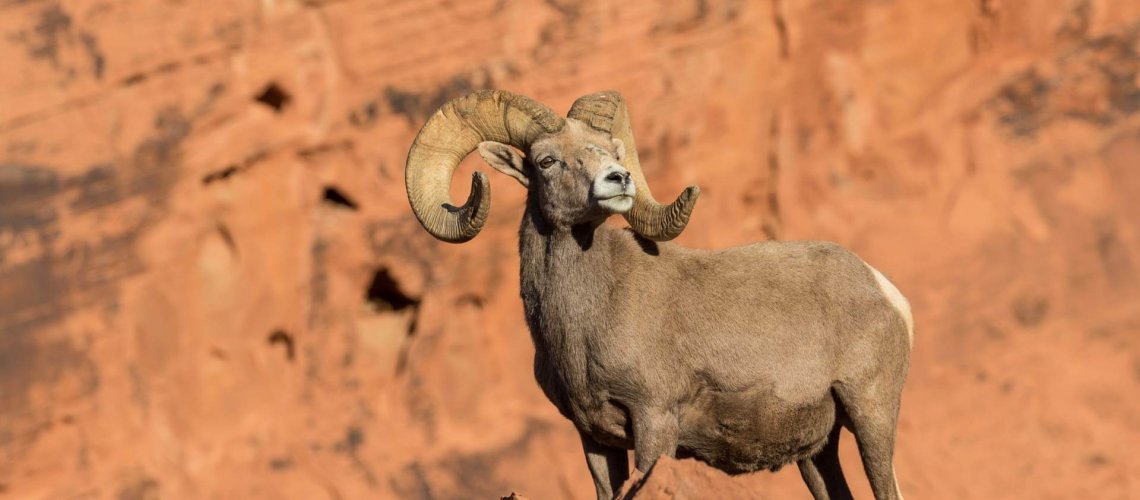Desert Bighorn Sheep (Nelsons) are a subspecies of bighorn sheep. They usually average about five feet in length, standing approximately 2 ½ to 3 ½ feet at the shoulder. Adult males can weigh anywhere between 100 to up to 220 pounds, with ewes somewhere between 100-150 pounds. Males usually live 9-13 years. Ewes live longer, usually reaching 12-20 years of age.
After their populations reached the brink of extinction with the colonization of the American Southwest during the early 16th century, populations stabilized and have since increased due to conservation efforts. It has been estimated that at one point, the combined numbers of all bighorn sheep subspecies were estimated to be somewhere over a million in North America. Their decline was due to over hunting, habitat loss and disease passed on from domestic livestock. Pneumonia caused by domestic sheep is still a problem today.
Desert Bighorn Sheep are broad, heavy-bodied animals with the ability to move seemingly effortlessly through steep rocky terrain. Their keen eyesight and concave, elastic hooves enable them to detect and evade would be predators such as mountain lions. One of their most notable characteristics are their thick, brown, curvaceous horns which can reach over three feet long. Their horns are a permanent keratin sheath that covers a bony core attached to the skull. Not only can the horns reach three feet in length, but a mature, full curl ram can reach a spread of up to 30 inches. They are also very heavy, with combined skull and horn weight of some rams reaching almost thirty pounds. It’s pretty common to see mature rams with their horn tips broken or missing. This is called “booming” and is usually done intentionally as the tips begin to interfere with their vision. Desert sheep also use their horns to break open cactus for food and, of course, they use their horns for fighting.
Bighorn sheep are a herd animal, and similar to mule deer, rams and ewes typically live separately for most of the year. They typically form groups of about 8-10, but often form larger herds. Rams group together in bachelor groups. Rut takes place from mid-November into December. The rams fight for dominance and attack each other by ramming their thick skulls and horns into each other while running at full speed. These brutal fights can last several hours with the winner breeding the Ewes.
Unlike other big game animals, desert sheep are the most active during the day and bed at night. They’ve also developed the ability to go extended periods of time without water. They sometimes go weeks and even months without water, other than what they get from browse, cactus and temporary pools created by rain. Their bodies can fluctuate several degrees, and they can even lose up to thirty percent of their body weight without dying. Desert sheep are extremely adaptable, resourceful and resilient.
Tags are issued in Arizona, Nevada, California, New Mexico, and Texas you can hunt them in Mexico as well. If you’re looking to complete your slam, and you want to test yourself against a truly challenging and worthy adversary, then look no further.
In the Boone and Crockett club all-time record book there have been 1,092 entries for desert bighorn meeting the 168 inch all-time minimum. The World record desert bighorn was taken by a Native American in 1940 and scored 205 ⅛ inches and is owned by the Arizona Desert Bighorn Sheep Society. Of those entries 62 percent came from Arizona and Mexico. 78 of the top 100 sheep taken also came from Arizona and Mexico. In the last five years Arizona is responsible for 29 of the top 100 sheep killed, Mexico has 17 entries and Nevada also has 29.

